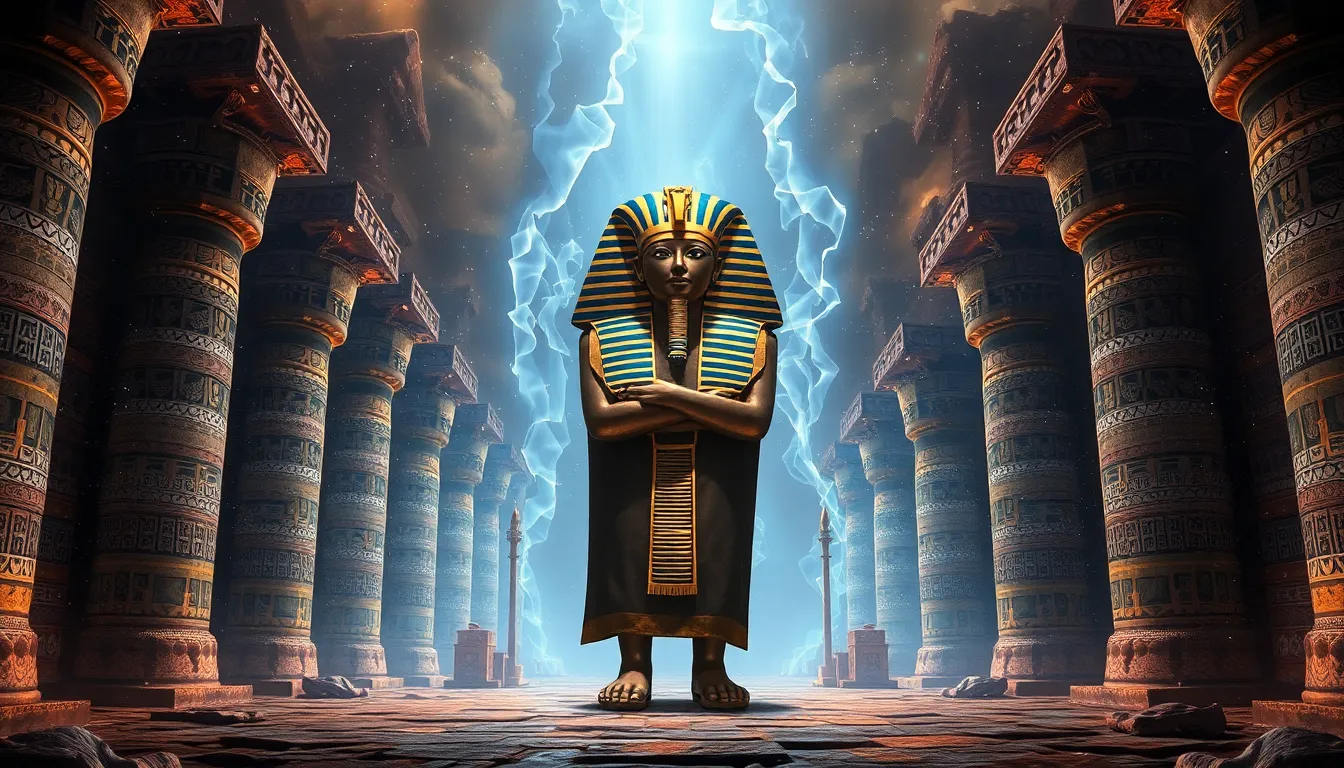The Myths of Pharaoh Merneptah’s Historical Significance
I. Introduction
Pharaoh Merneptah, the thirteenth ruler of the Nineteenth Dynasty of Egypt, ascended to the throne around 1213 BCE and reigned until approximately 1203 BCE. His reign is often overshadowed by that of his father, Ramses II, yet Merneptah’s historical significance cannot be understated. Understanding the myths surrounding his reign provides critical insight into the cultural and political landscape of ancient Egypt.
The importance of studying historical myths lies in their ability to illuminate how societies interpret events and figures from their past. Myths often reflect the values, fears, and aspirations of a culture, thus revealing much about their historical context. This article aims to explore the historical significance of Pharaoh Merneptah, examining his reign, the myths associated with him, and how they have shaped our understanding of ancient Egypt.
II. Historical Context of Merneptah’s Reign
The Nineteenth Dynasty of Egypt, known for its powerful rulers and monumental architecture, was a period of both prosperity and turmoil. Merneptah’s ascension followed a long and successful reign under his father, Ramses II, who is often regarded as one of Egypt’s greatest pharaohs.
Upon Ramses II’s death, Merneptah inherited a kingdom that was both rich in culture and facing external pressures. Key events during Merneptah’s reign included:
- Military campaigns against the Libyans and Sea Peoples.
- Internal strife and challenges to his authority from various factions.
- Continued construction projects that reflected the dynasty’s grandeur.
III. The Merneptah Stele: A Source of Myth and Reality
The Merneptah Stele, inscribed around 1208 BCE, is one of the most important archaeological finds related to Merneptah’s reign. This granite slab commemorates his military victories and is notable for being one of the earliest references to Israel in a historical context.
Myths surrounding the stele’s inscriptions often exaggerate Merneptah’s accomplishments, suggesting that he single-handedly vanquished numerous foes. The stele lists various peoples, including the Israelites, as defeated, but the historical accuracy of these claims is debated among scholars.
While the stele offers insight into Merneptah’s military endeavors, it is essential to analyze its claims critically, acknowledging both the historical context and the propagandistic nature of such inscriptions that were meant to bolster the pharaoh’s image.
IV. Merneptah and the Biblical Narrative
Merneptah’s connection to biblical accounts, particularly the Exodus narrative, has sparked much interest and debate among historians and theologians. The mention of “Israel” in the Merneptah Stele is significant as it suggests that a group identified as Israelites existed in Canaan during Merneptah’s reign.
Examination of the “Israel” reference reveals that it is not a direct mention of the Exodus but rather an indication of the presence of a people who had settled in the region. Myths regarding Merneptah’s role in the Exodus story often attribute a larger-than-life significance to him, suggesting he was a key figure in the events of the biblical narrative.
However, many scholars argue that these connections are tenuous at best, emphasizing the need for cautious interpretation of archaeological evidence in light of literary sources.
V. Misinterpretations of Merneptah’s Military Campaigns
Merneptah’s military actions, particularly against the Libyans and the Sea Peoples, are often romanticized in historical narratives. While he did achieve some notable victories, these accounts are frequently embellished, leading to myths about his prowess as a military leader.
The realities of his campaigns included:
- Successes in defending Egypt against invasions.
- Failures to fully subdue the Libyans, leading to ongoing conflicts.
- The eventual decline of military strength towards the end of his reign.
The impact of these military campaigns on Merneptah’s legacy is significant, as they shaped perceptions of his effectiveness as a ruler and the stability of his reign.
VI. Merneptah’s Contributions to Egyptian Culture
Despite the turmoil of his reign, Merneptah made notable contributions to Egyptian culture, particularly in the realms of art and architecture. His building projects included:
- The construction of temples and monuments that showcased artistic achievements.
- Innovative relief work that depicted both divine and royal themes.
- Contributions to the continuation of traditional Egyptian artistic styles.
Myths about his contributions often exaggerate the extent of his cultural impact, suggesting that he was a transformative figure in Egyptian history. However, his work laid a foundation that would influence subsequent generations, showcasing the continuity of Egyptian culture.
VII. The Legacy of Merneptah in Modern Scholarship
In contemporary Egyptology, Merneptah is viewed with a nuanced perspective that accounts for both historical fact and myth. The evolution of myths surrounding his historical significance reflects broader trends in how ancient figures are understood today.
New discoveries, including archaeological finds and advancements in technology, have reshaped perceptions of Merneptah’s reign. Scholars continue to debate his military effectiveness, cultural contributions, and his connections to biblical narratives, illustrating the dynamic nature of historical interpretation.
VIII. Conclusion
In summary, Pharaoh Merneptah’s historical significance is multifaceted, shaped by both reality and myth. From his military campaigns to his contributions to culture, the narratives surrounding his reign reveal much about ancient Egyptian society.
The importance of differentiating myth from historical fact cannot be overstated, as it allows for a clearer understanding of the past. As scholarship continues to evolve, the significance of Pharaoh Merneptah in history remains a topic of interest and study.




